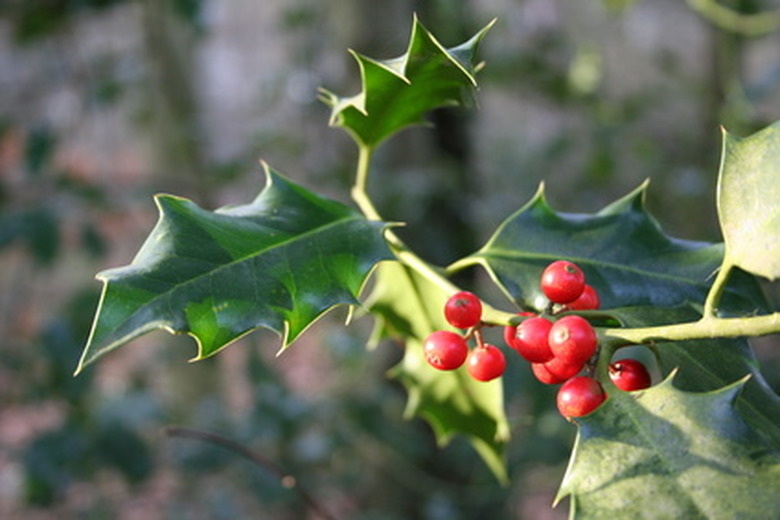Holly Tree Disease
The holly, its bright-red berries a favorite symbol of winter, is one of the most popular landscape trees. It makes an excellent screen, barrier, foundation planting or accent plant, and wildlife use it for food and cover. Overall, hollies are very hardy plants that will live a long time to brighten your garden. Some diseases can affect your hollies, but most can be avoided by giving the plants adequate space, water, pruning and drainage, plus fungicide if needed.
Tar Spot
Tar spot is a fungal disease caused by Phacidium curtisii. If your holly is infected, yellow spots will appear on the leaves of American and English hollies in May. These turn reddish-brown and finally black by fall. In years of heavy rainfall, berries as well as leaves are spotted.
- The holly, its bright-red berries a favorite symbol of winter, is one of the most popular landscape trees.
- Some diseases can affect your hollies, but most can be avoided by giving the plants adequate space, water, pruning and drainage, plus fungicide if needed.
Remove and destroy (do not compost) all heavily spotted or fallen leaves. Prune your holly to improve air circulation.
Witches' Broom
The Sphaeropsis tumefaciens fungus, often called Sphaeropsis gall or the less formal witches' broom, starts at the holly's lowest part. Diseased stems and branches become swollen and enlarged, and an excessive number of shoots will sprout vertically from the infected areas. Leaves will drop off and branches may die back. This fungus can kill a holly.
Remove diseased branches and limbs, pruning at least 12 inches into non-infected wood. It is vital to clean your tools between cuts to keep from spreading the disease. Dip your cutting tools in a 10 percent bleach solution. Fungicides cannot control this fungus.
- Remove and destroy (do not compost) all heavily spotted or fallen leaves.
- Diseased stems and branches become swollen and enlarged, and an excessive number of shoots will sprout vertically from the infected areas.
Black Root Rot
The fungus Thielaviopsis basicola causes black root rot. While most of the damage occurs underground, visible symptoms can include stunted growth, shortened internodes (the area between stems) and yellowing of the leaves (though the veins remain green). An infected holly will have dark brown to black roots; the fungus works its way back from the tips. If your holly has extensive damage, dry periods will cause it to decline and die.
Black root rot can remain dormant in the soil for many years. Planting your holly in well-drained raised beds and removing infected plants will help curb the disease. Chinese holly (Ilex cornuta) is resistant to the fungus; Japanese holly (Ilex crenata) is very susceptible.
- The fungus Thielaviopsis basicola causes black root rot.
- An infected holly will have dark brown to black roots; the fungus works its way back from the tips.
Cercospora Blight
Cercospora blight or leafspot is a fungus that causes circular gray or brown spots with dark margins on holly leaves. Occasionally, spots may leave ragged holes. Cercospora will cause the foliage to turn brown and drop off prematurely. It rarely is fatal. Remove infected leaves, but do not compost them. Use a fungicide recommended for hollies if the outbreak becomes severe.
Coniothyrium
Coniothyrium is a fungus that causes round or irregularly shaped, brown or gray spots with a dark border on holly leaves. Older lesions will have black specs inside. Coniothyrium rarely causes serious damage, but the holly's leaves will turn yellow and drop early. Give your holly the best growing conditions possible, and avoid watering the foliage by using drip irrigation.
- Cercospora blight or leafspot is a fungus that causes circular gray or brown spots with dark margins on holly leaves.
- Coniothyrium rarely causes serious damage, but the holly's leaves will turn yellow and drop early.
